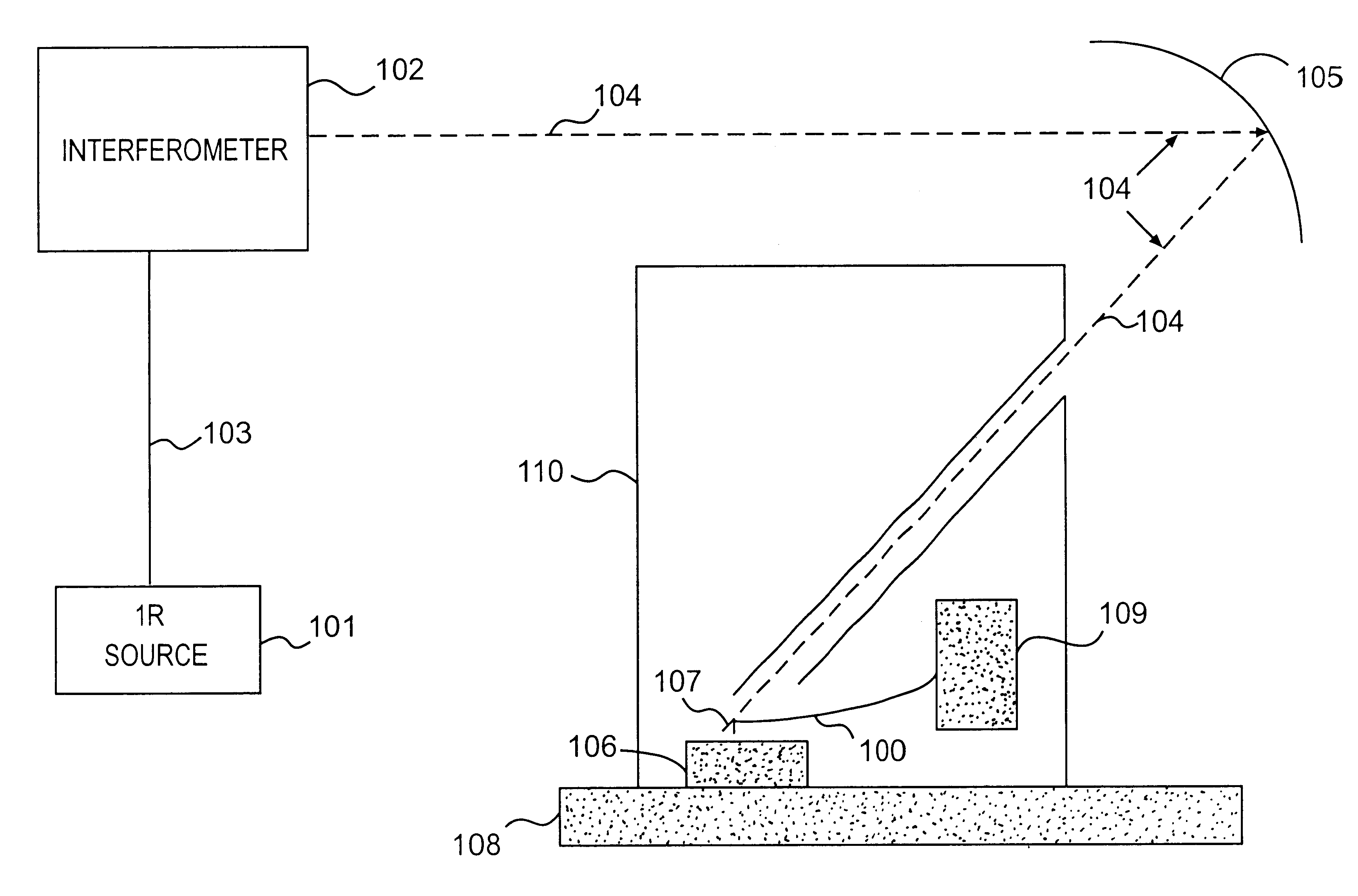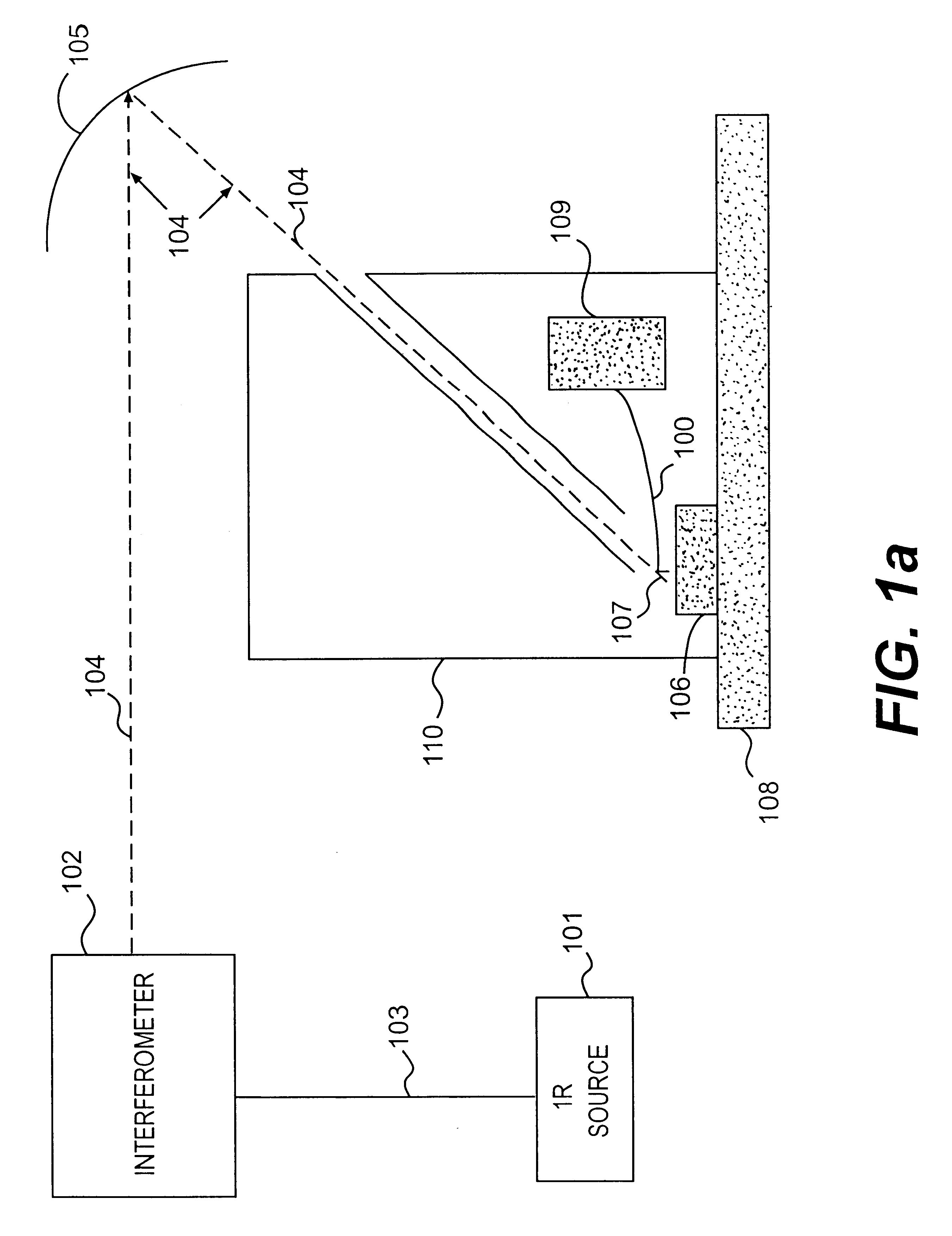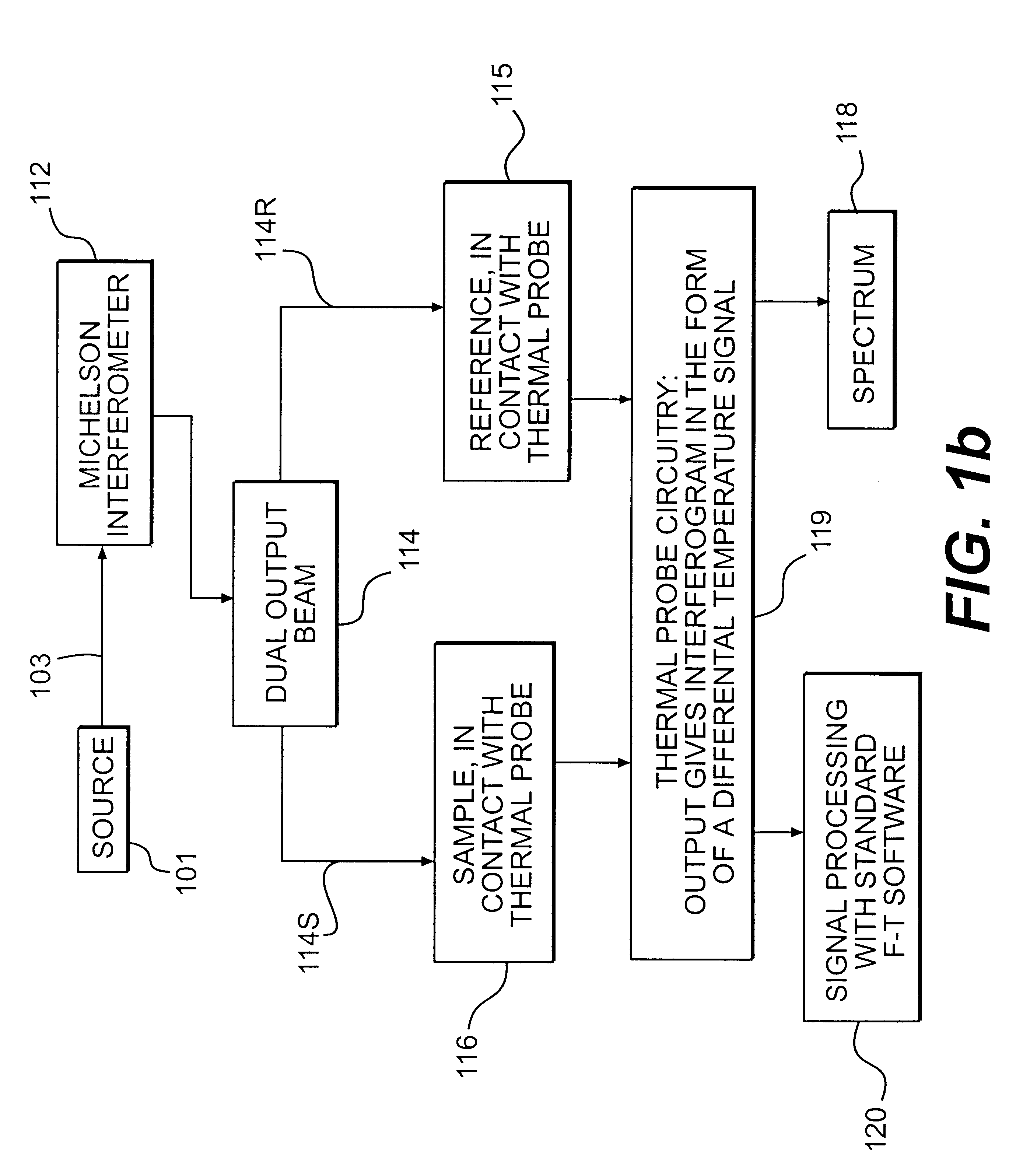Method and apparatus for high spatial resolution spectroscopic microscopy
- Summary
- Abstract
- Description
- Claims
- Application Information
AI Technical Summary
Benefits of technology
Problems solved by technology
Method used
Image
Examples
Embodiment Construction
(see D. W. van Krevelen, Properties of Polymers, Elsevier 1990)
The calculations below assumes the material has the values of parameters of polyethylene.
Notation:
Thermal conductivity k=0.15 Wm.sup.-1 .degree. KE.sup.-1
Density.times.heat capacity .rho.C.sub.p =10.sup.6 Jm.sup.-3 .degree. K.sup.-1
Diffusivity D=k / (.rho.C.sub.p)=1.6.times.10.sup.-7
Thermal diffusion length .mu. is given by .mu..sup.2 =D / (.pi..nu.), where .nu. is frequency.
Optical absorption length for IR within a typical absorption band:
l.sub..beta. =2.5 .mu.m (absorption coefficient=4.times.10.sup.5 m.sup.-1, but can vary two orders of magnitude from one "edge" to another. With visible light, l.sub..beta. =10.sup.-4.
IR bandwidth (.DELTA..lambda.) chosen: 200 nm.
Thickness of the near-surface layer of interest: z.sub.s =either film thickness, or =.mu., see above ("bulk" samples).
Illuminated area of sample: 1 mm.sup.2
Power of source: 100 mW
Power per nm of the absorption band: 0.7.times.10.sup.-6 (the implied ratio R=1.4.tim...
PUM
 Login to View More
Login to View More Abstract
Description
Claims
Application Information
 Login to View More
Login to View More - R&D
- Intellectual Property
- Life Sciences
- Materials
- Tech Scout
- Unparalleled Data Quality
- Higher Quality Content
- 60% Fewer Hallucinations
Browse by: Latest US Patents, China's latest patents, Technical Efficacy Thesaurus, Application Domain, Technology Topic, Popular Technical Reports.
© 2025 PatSnap. All rights reserved.Legal|Privacy policy|Modern Slavery Act Transparency Statement|Sitemap|About US| Contact US: help@patsnap.com



